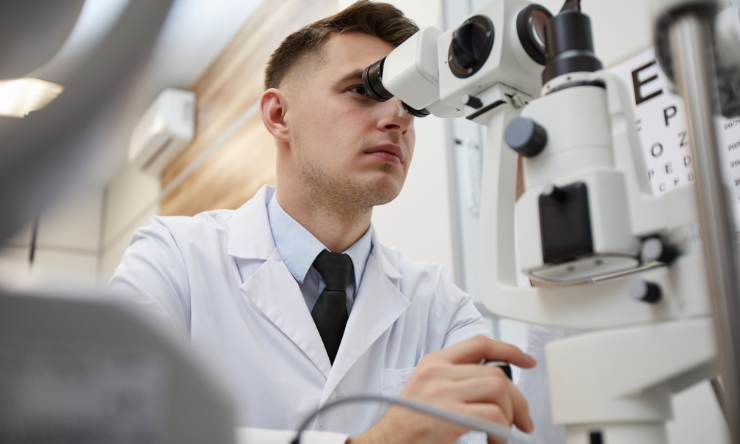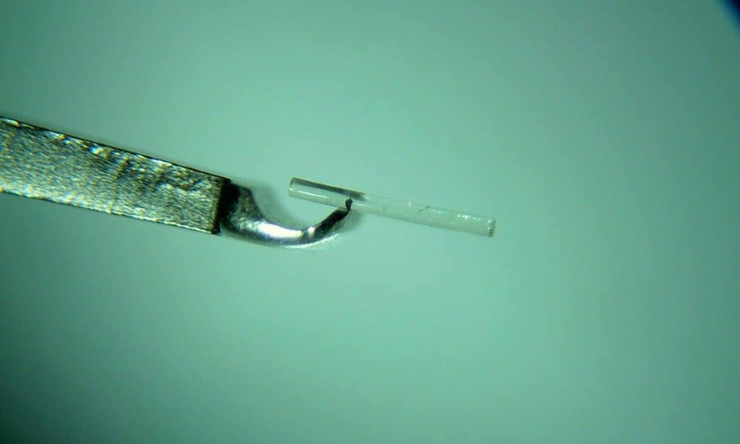Share
Glaucoma is an eye condition where the optic nerve, which transmits the images we see from our eye to our brain, becomes damaged. It is usually caused by a build-up of pressure inside the eye because the fluid in the eye cannot drain out properly. Glaucoma is treated by lowering the pressure inside your eye with eye drops, laser, or surgery. If not treated, glaucoma can lead to vision loss and even blindness.

Traditionally people with glaucoma were treated with eye drops, which need to be used lifelong, and/or laser treatments. If eye drops or laser treatments did not work, sometimes complex and invasive eye surgery was required. However, an entirely new class of surgery called ‘minimally invasive glaucoma surgery’ or ‘MIGS’ is changing that.
These procedures use tiny incisions to place microscopic devices inside the eye to lower the pressure inside the eye, aiming to reduce or eliminate the need for glaucoma eye drops or invasive surgery. MIGS procedures are most commonly performed at the time of cataract surgery but some can be performed alone if required.
These procedures represent a major advance for people with glaucoma. However, they will not cure your glaucoma, reverse any damage already caused by glaucoma, or bring back any vision which has already been lost.
There are a number of MIGS procedures and they work in different ways. In the healthy eye, the amount of fluid is equal to the amount of fluid that drains out. However, in glaucoma the natural drainage channel inside the eye (where fluid normally drains out of the eye) becomes clogged or blocked. This results in a rise in pressure which can damage the optic nerve. MIGS procedures work by bypassing this blockage and help the fluid inside the eye drain out via different routes. There are a number of MIGS procedures available in Australia and you should speak with your optometrist or ophthalmologist to see if one is suitable for you.
iStent Inject
The iStent Inject is a tiny tube less than 1 mm in length made of surgical-grade titanium. The iStent Inject is inserted into the natural drainage channel inside the eye, bypassing the blockage, allowing fluid to more easily drain out. Two iStent Inject stents are typically inserted at the same time as cataract surgery to lower eye pressure and reduce the need for glaucoma medications.
The procedure is most suitable for adult patients with mild-to-moderate open-angle glaucoma treated with glaucoma eye drops who require cataract surgery. The iStent Inject is not suitable for the treatment of very advanced glaucoma or where the natural drainage system of the eye is damaged. The recovery from surgery is rapid and typically no longer than cataract surgery alone. The iStent Inject cannot be seen or felt and provides a modest reduction in eye pressure and glaucoma medication requirements. However, the effect of the iStent Inject can reduce over time and glaucoma eye drops may need to be resumed.
Hydrus
The Hydrus is a curved flexible stent approximately the size of an eyelash. It is made of a super-elastic alloy of nickel and titanium, the same material used to make stents for use in the heart. Once inserted, it acts like a scaffold to widen and dilate the natural drainage channel inside the eye. It contains a small inlet to allow fluid inside the eye to enter the stent.
Like the iStent, it is suitable for people with mild-to-moderate open-angle glaucoma treated with eye drops who require cataract surgery. Recovery is rapid and patients may experience a modest reduction in eye pressure and/or need for glaucoma medication. The Hydrus cannot be seen or felt. Like the iStent, it is safe to have an MRI scan in most machines following the Hydrus procedure.
CyPass Micro-Stent
The CyPass is a small tube, only 6 mm in length, made of a special plastic material. It is inserted into the eye and cannot be seen or felt. The CyPass is completely MRI safe. The stent bypasses the blocked drainage channel and allows fluid to drain into an alternative natural fluid drainage channel inside the eye.
The CyPass has been shown to effectively lower eye pressure and need for glaucoma medication when performed with cataract surgery in patients with glaucoma in a large clinical trial. It may provide greater eye pressure reduction and a higher chance of being medication-free. It is suitable for patients with open-angle glaucoma and is typically performed at the time of cataract surgery. The CyPass can also be performed by itself where eye pressure is not controlled with medications or following other MIGS procedures or traditional glaucoma surgery.
Reproduced with permission of Alcon.
XEN Gel Glaucoma Implant
The XEN is a soft and flexible tube derived from porcine collagen. It is 6 mm long and nearly as thin as a strand of human hair. Once inserted into the eye it allows fluid to drain into a small blister or bleb under the outer skin of the eye, located on the top of the eye and covered by the upper eye lid. The bleb cannot usually be seen with the naked eye or felt. It is also MRI safe. The XEN is typically performed by itself to lower eye pressure where medications have failed to reduce eye pressure to a safe level, however the XEN can be performed with cataract surgery for people with both refractory glaucoma and cataract, or where the drainage channel is closed. Because the XEN bypasses the natural drainage channels altogether it can be used in more types of glaucoma including where the natural drainage channel is damaged or closed.
The XEN is less invasive and offers a much faster recovery than traditional glaucoma surgery. Unlike the most commonly performed glaucoma operation, called trabeculectomy, there is no need for sutures and the return of clear vision is more rapid. As the XEN starts to work straight away to lower eye pressure, you will be able to stop taking your glaucoma drops in the operated eye immediately after the procedure. Following surgery, you will need to attend regular follow-up appointments to monitor your eyes.
Conclusion
People with glaucoma are now fortunate to have access to a range of different treatments including eye drops, laser treatment, and surgery. The correct treatment for you will depend on the type of glaucoma you have, the severity, your eye pressure, and whether you have other eye conditions such as cataract. Your optometrist or ophthalmologist can work with you to create a treatment plan that is right for you. You will also need regular appointments to monitor your condition and ensure that treatment is working.
Any trademarks, logos and images are copyright of their respective owners.


